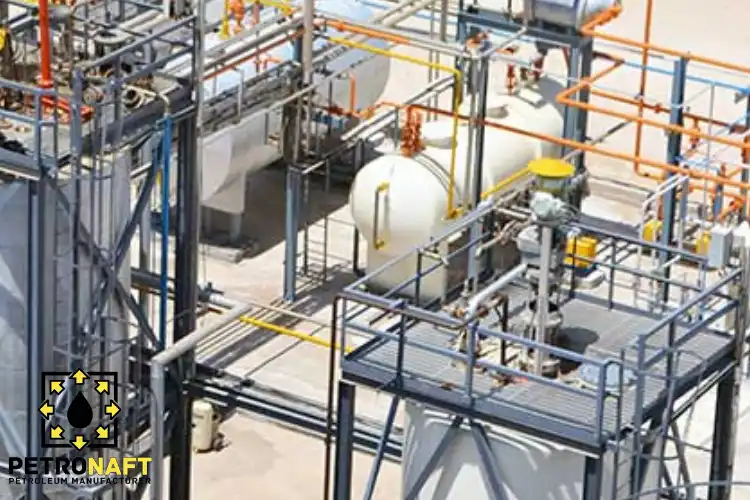A Comprehensive Look at Sulfonated Asphalt Production
Delving into the intriguing Sulfonated Asphalt Manufacturing Process, this guide offers a comprehensive overview of the production stages, the essential ingredients, and the diverse applications of this sought-after material in the oil and gas sector. Gain valuable insights into the making of sulfonated asphalt and its significance in the industry.
Raw Materials and Preparation
The primary raw materials used in the sulfonated asphalt manufacturing process are asphalt, sulfuric acid, and water. The process begins with selecting high-quality asphalt, typically extracted from crude oil during the refining process. It is crucial to choose asphalt with appropriate softening points and viscosity for the intended application.
Sulfonation Process and Techniques
The sulfonation of asphalt occurs through the reaction between asphalt and sulfuric acid, creating sulfonated asphalt with unique characteristics. There are two primary techniques for carrying out this reaction: batch and continuous processes. In the batch process, asphalt is mixed with sulfuric acid in a reactor, while in the continuous process, the mixture is fed through a series of reaction chambers. Both methods have their advantages, with the continuous process generally being more efficient and cost-effective.
Neutralization and Filtration
Following sulfonation, the reaction mixture is neutralized by adding water, which produces a slurry of sulfonated asphalt particles. The neutralization step is critical, as it stabilizes the sulfonated asphalt and prevents it from breaking down under high temperatures. The resulting slurry is then filtered to remove impurities and unreacted materials, leaving behind a solid product that can be further processed.
Drying and Particle Size Reduction
The filtered sulfonated asphalt is dried to remove excess moisture, typically using a rotary dryer. This step reduces the likelihood of the product clumping together and ensures consistent quality. After drying, the material undergoes a particle size reduction process, often using a hammer mill or roller mill. The goal is to achieve a uniform particle size distribution, which improves the performance of sulfonated asphalt in various applications.
Quality Control and Packaging
Before packaging, sulfonated asphalt undergoes stringent quality control testing to ensure it meets the necessary specifications. These tests may include softening point measurements, viscosity tests, and filtration control assessments. Once the product passes quality control, it is packaged in bags or containers for transportation and storage.
Applications of Sulfonated Asphalt in the Oil and Gas Industry
Sulfonated asphalt is primarily used as an additive in drilling fluids, where it imparts several beneficial properties. It acts as a fluid loss control agent, reducing the amount of fluid that seeps into the surrounding rock formations during drilling. This helps to maintain drilling fluid density and prevent the formation of mud rings. Additionally, sulfonated asphalt serves as a shale stabilizer, preventing the swelling and disintegration of shale formations when exposed to water. This is particularly useful in preventing wellbore instability and the associated risks.
Environmental and Economic Benefits
The use of sulfonated asphalt in drilling fluids offers several environmental and economic advantages. The material is biodegradable and non-toxic, reducing the environmental impact of drilling operations. Moreover, the enhanced fluid properties provided by sulfonated asphalt can lead to more efficient drilling, ultimately reducing costs and energy consumption. These benefits have spurred further research and development in sulfonated asphalt production, with the aim of further optimizing the manufacturing process and expanding its applications.
Conclusion
The sulfonated asphalt manufacturing process is a complex yet vital operation that contributes significantly to the oil and gas industry. By understanding the intricacies of this process, including raw material selection, sulfonation techniques, neutralization, filtration, drying, particle size reduction, and quality control, manufacturers can optimize their production methods and create high-quality products. The numerous benefits of sulfonated asphalt, such as improved drilling fluid properties, reduced operational costs, and minimized environmental impact, have led to its widespread adoption in the industry.
Future Perspectives and Innovations
With the growing demand for sulfonated asphalt and its increased application in various sectors, there is a continuous drive for innovation and improvement in the manufacturing process. Researchers and industry professionals are exploring alternative sulfonation methods, such as the use of oleum or different catalysts, to further enhance the properties of sulfonated asphalt. Additionally, the development of novel formulations and blends with other additives can potentially expand its range of applications.
Moreover, the incorporation of advanced process control systems and automation in the manufacturing process can lead to increased efficiency, reduced waste, and lower production costs. These advancements will likely contribute to the long-term sustainability and competitiveness of the sulfonated asphalt industry.
In conclusion, the sulfonated asphalt manufacturing process plays a crucial role in providing effective solutions for the oil and gas industry, particularly in drilling operations. By continually refining the production methods and exploring new applications, the industry can expect to see further growth and innovation in the years to come.
Purchasing This Product from Petro Naft
For more detailed information and to purchase the product discussed in this article, please visit the dedicated product page below. Alternatively, use the various communication channels provided on our site to register your purchase inquiry or take advantage of our expert guidance.
Prepared by the PetroNaft Co. research team.



